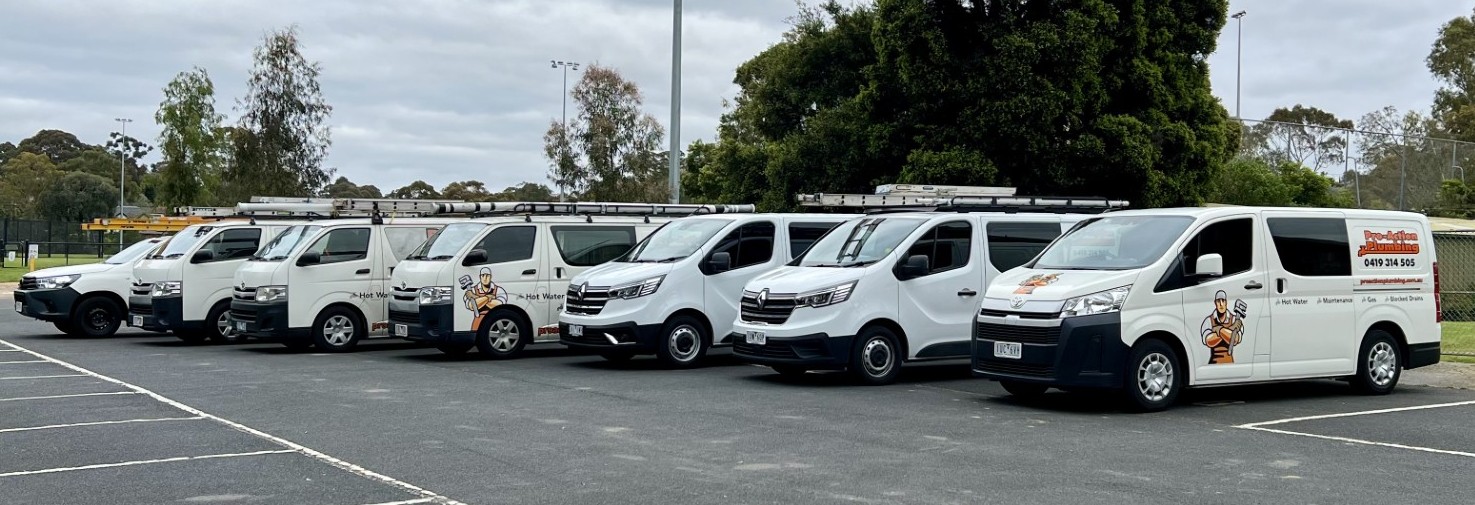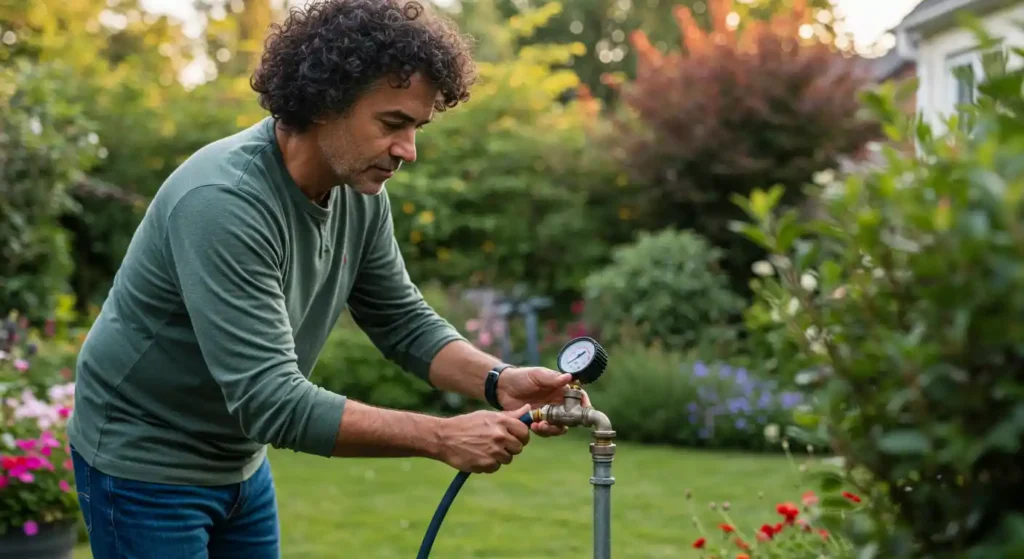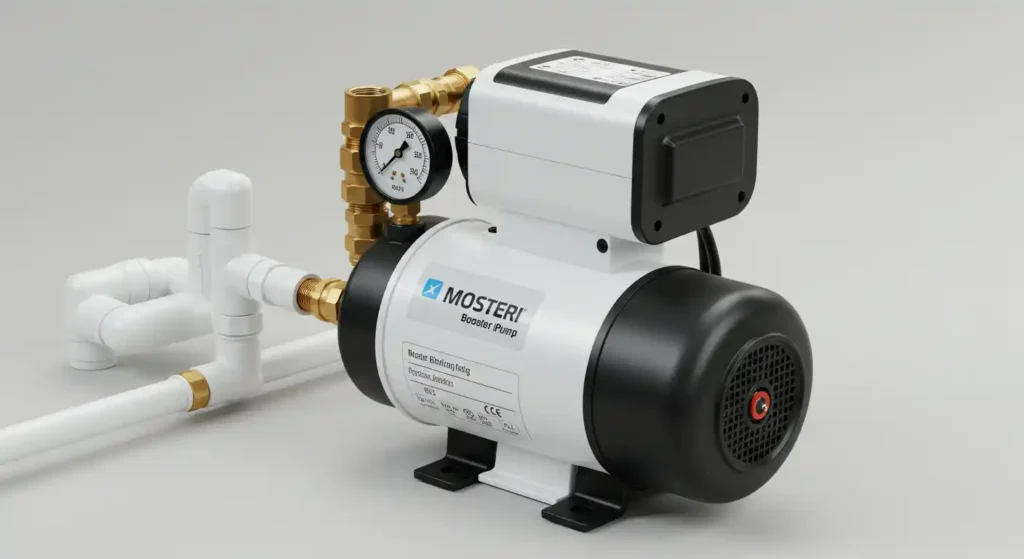
How to increase water pressure in your home
Many homeowners in Australia experience low water pressure in their homes. Whether you’re taking a shower, doing laundry, or washing the dishes, weak water flow can make everyday tasks take longer and feel more frustrating. It can also be disappointing when you’re paying full utility costs but not getting the water performance you expect.
This guide covers the common causes of low pressure, how to check your water pressure, and practical steps to improve it. Each solution is explained in detail, allowing you to address the problem on your own before considering a plumber’s help.
What Causes Low Water Pressure in a House?
Before you can improve your water pressure, you need to know why it’s low in the first place. Here are the most common reasons:
1. Faulty or Old Plumbing
Old pipes, especially if they’re galvanised steel, can corrode inside over time. This reduces the internal diameter and restricts water flow.
2. Water Leaks
A hidden leak somewhere in your plumbing system means water is escaping before it gets to the tap. Even a small leak can lower water pressure noticeably.
3. Clogged Fixtures
Tap aerators and showerheads can build up mineral deposits and sediment, especially in areas with hard water. That buildup blocks water flow.
4. Pressure Regulator problem
Many homes have a water pressure regulator installed where the mains water enters the property. If it’s faulty or out of adjustment, pressure can drop throughout the house.
5. Peak Usage Times
If you live in a busy neighbourhood, water demand during certain hours (like early mornings or evenings) might reduce the pressure temporarily.
6. Shared or Narrow Supply Line
Some older homes still run on shared supply lines or narrow pipes that simply can’t keep up with modern water usage demands.
How to increase water pressure in your home
If you’re dealing with low water pressure at home, improving it can be straightforward if you follow the right steps. Here’s how you can increase water pressure in your home.
Step 1: Check the Pressure at a Tap
Start by checking the water pressure at one of your taps. To do this, you’ll need a pressure gauge, which can be easily purchased at most hardware stores. It’s simple to use:
- Attach the pressure gauge to an outdoor tap.
- Turn the tap on fully and note the reading.
The ideal water pressure should be between 40-60 psi (pounds per square inch).

If the reading is below 40 psi, you likely have an issue with low water pressure that needs fixing. Anything lower than this could cause weak water flow, especially noticeable during activities like showering or using multiple taps at once.
Step 2: Look for Leaks
Leaks can significantly reduce water pressure, so checking for them is essential. Here are some common signs that you may have leaks:
- Wet spots on walls or ceilings
- Pools of water near outdoor pipes or faucets
- Unusually lush, green patches in the garden
Another way to check for leaks is to perform the water meter test:
- Turn off all taps and water-using appliances.
- Record the reading on your water meter.
- Wait an hour without using any water, then check the meter again.
If the meter has moved, it’s likely you have a leak somewhere in your system. Leaks waste water and can further decrease your water pressure, so fixing them should be a priority. You can learn how to fix a burst water pipe here.
Step 3: Clean Showerheads and Taps
If only one tap or showerhead seems to have low pressure, the issue might be a buildup of mineral deposits. Over time, minerals in the water can clog the small holes in your taps and showerheads, restricting water flow. Here’s how to fix it:
- Remove the aerator from the tap or the showerhead.
- Soak it in white vinegar overnight to dissolve mineral deposits.
- After soaking, use a toothbrush to scrub away any remaining buildup.
- Rinse it thoroughly and reinstall it.
Cleaning your showerheads and taps regularly can prevent these types of blockages, keeping the water flow smooth.
Step 4: Check and Adjust the Pressure Regulator
If your home is equipped with a water pressure regulator, which is often located near the water meter or where the main water line enters the house, it may be set too low. The pressure regulator controls the water flow entering your home, and adjusting it could be the solution to your low pressure.
Follow these steps to check and adjust the regulator:
- Locate the regulator; It typically looks like a bell-shaped fitting.
- Use a wrench to loosen the locknut.
- Turn the screw clockwise to raise the pressure or anti-clockwise to lower it.
- Make small adjustments, turning the screw a quarter turn at a time.
- After each adjustment, check the pressure again with the gauge.
Be cautious not to increase the pressure too much. Anything over 80 psi can damage your plumbing, appliances, and potentially void warranties on certain systems.
Step 5: Install a Water Pressure Booster
If adjusting the pressure regulator doesn’t give you the desired results, installing a water pressure booster might be the next step. These systems help to regulate water pressure more effectively and increase flow throughout your home. A booster works by detecting low incoming pressure and automatically increasing the flow to meet your needs.
Benefits of a booster system include:
- It raises pressure levels, particularly when mains pressure is low.
- It can maintain consistent pressure even when multiple taps are in use.
- It is most effective when paired with a pressure tank.

If you need help installing a booster, you can call a professional plumber in Ringwood VIC to make sure it is done right.
Step 6: Replace Narrow or Old Pipes
Older homes often have pipes that are too narrow or corroded, which can lead to weak water pressure. Upgrading to wider, more efficient pipes can make a big difference. Here are some ways to improve the plumbing:
- Upgrade pipes from ½-inch to ¾-inch for better flow.
- Replace corroded galvanized pipes with modern materials like copper or PEX.
- Install individual shut-off valves to improve control over water flow.
Replacing old or narrow pipes requires a more significant investment, but it can result in long-term improvements to water pressure and overall plumbing health.
Step 7: Talk to Your Water Provider
If you’ve tried all the above steps and still experience low pressure, it could be due to issues outside your home. Check with your water provider to see if there’s a problem on their end, such as:
- Ongoing infrastructure upgrades.
- Temporary outages or low-pressure situations in your area.
- The mains water pressure being reduced.
If the problem is related to their system, they may be able to offer solutions or even adjust the pressure coming into your home.
By following these steps, homeowners can regulate water pressure, improve water flow, and enhance the overall experience of using water in their homes. Whether you need to adjust your pressure regulator, clean your fixtures, or install a booster system, there are plenty of ways to get things flowing smoothly again. If the issue persists, don’t hesitate to contact a professional plumber for further assistance.
Extra Tips to Maintain Good Water Pressure
Once you’ve fixed the problem, keeping your water pressure steady over time is important. Here’s what you can do:
- Regularly clean taps and showerheads
- Check the pressure gauge every few months.
- Flush hot water systems annually to remove sediment.
- Keep an eye on utility bills for signs of a hidden leak.
When to Call a Professional
While many issues can be handled at home, there are times when calling in a licensed plumber is the smartest move. You should reach out for help if:
- You can’t find the cause of low pressure.
- Your regulator is broken and needs replacement.
- You need help installing a booster pump.
- Pipes need to be replaced.
A good plumber will not only fix the issue but also make sure your system is compliant with Australian plumbing standards.
Summary: Regulate, Adjust, Improve
Boosting water pressure isn’t always a massive job. Often, it’s about checking the right things, making small adjustments, and understanding how your home’s plumbing works.
To recap:
- Check pressure with a gauge.
- Fix leaks and clean fixtures.
- Adjust the pressure regulator.
- Install a booster pump if needed.
- Replace old or narrow pipes in older homes.
- Stay in touch with your water supplier.
Taking the time to regulate water pressure properly can improve comfort, reduce stress, and make everyday tasks more efficient at home.
Final Thoughts
Low water pressure in your home might seem like a minor issue, but it can indicate a problem that should be addressed. By following the proper steps, you can raise your water pressure, improve the flow throughout your home, and prevent more serious issues.
If you’ve tried the suggestions above and the problem persists, it’s time to seek professional advice. However, these simple solutions will usually do the trick for most homeowners.
